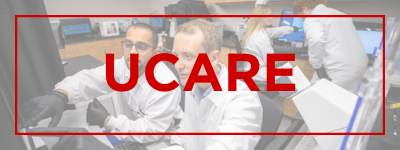UCARE: Undergraduate Creative Activities and Research Experiences

UCARE: Research Products
Date of this Version
4-2020
Document Type
Poster
Citation
Poster presentation, UCARE Research Fair, Spring 2020, University of Nebraska-Lincoln.
Abstract
The discovery of antibiotics and antifungals greatly impacted medicine and human health, allowing the effective treatment of infections that were previously deadly. However, due to routine and sometimes excessive usage of these compounds, the development of antimicrobial resistance has created a need for new antibiotic and antifungal compounds. Isocyanide compounds have been shown to have antibacterial, antifungal, and anti-cancer properties, but very little is known about their biochemical effects. Our research aims to understand the mechanism of action of isocyanide compounds. We have conducted a genetic screen of a Saccharomyces gene-deletion (“knockout”) collection on media containing an easily synthesized model isocyanide compound, para-nitrophenyl isocyanide (p-NPIC). This allowed us to identify genes which, when deleted, render the mutant strains resistant or hypersensitive to the compound. Based on our genetic screen for hypersensitive mutants, we hypothesize that the isocyanides impact mitochondrial function, specifically altering the function of the Cu++-containing respiratory complex, Cytochrome C Oxidase (Complex IV). Our findings provide new information on the mechanism(s) of action of this class of antimicrobials and will help guide the development of new molecules based on lead-compounds such as p-NPIC.


Comments
Copyright 2020 by the authors.